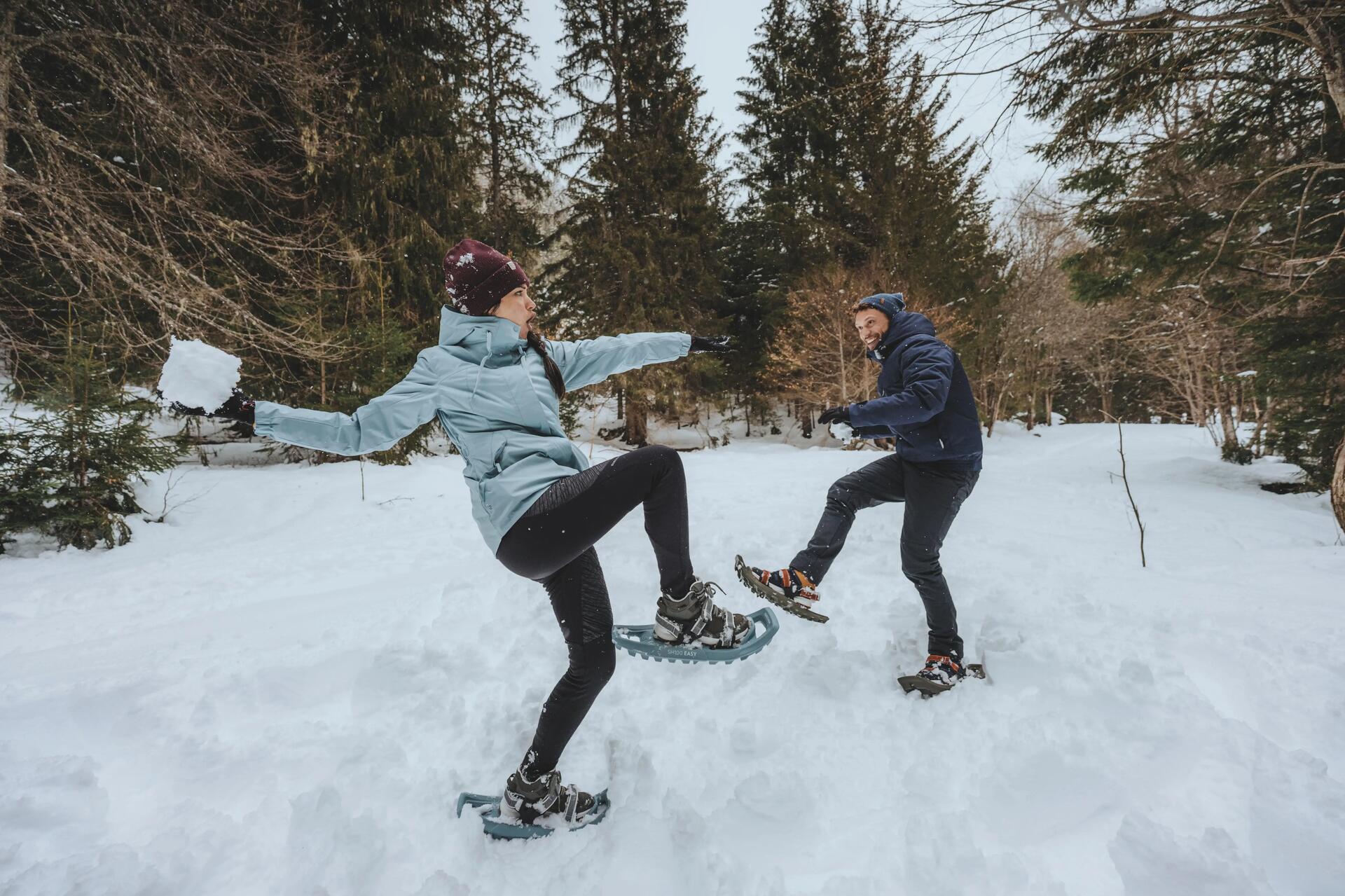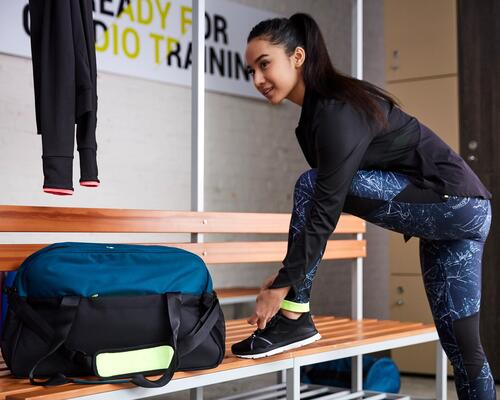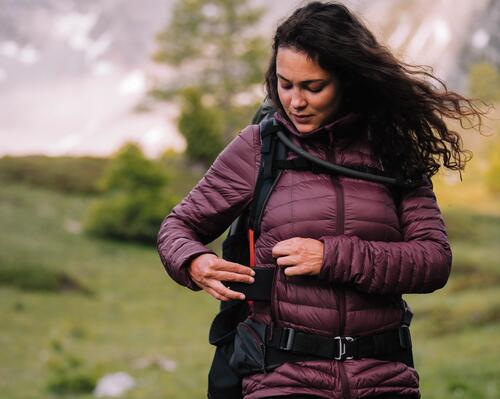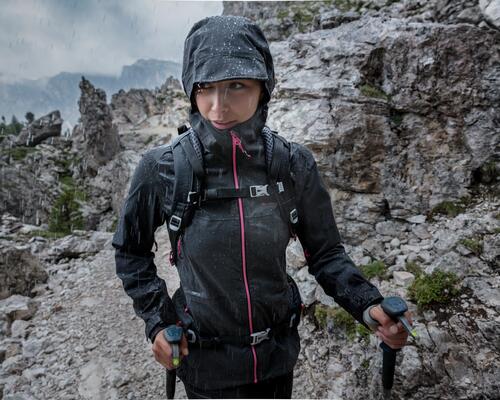The main criteria for choosing a women’s jacket or parka
When choosing a women's parka or jacket for winter, you need to consider:
• Your level of exertion: if you're going on an intensive snowshoeing or cross-country skiing trip, for example, you'll be too hot in a parka! Instead, you’ll need a hybrid bimaterial jacket. If you're going to be hiking in the snow in the middle of winter at a moderate intensity, a parka is what you’ll need. For everyday use, opt for a warm jacket.
• What the filling in the jacket or parka is made out of: filling made from synthetic materials is suitable for both everyday use and colder temperatures, depending on the density, while natural materials are better for those who are sensitive to the cold or who go hiking in extremely cold temperatures.
• The density of the filling: expressed in g/m², the density gives an indication of the thermal retention capacity of the filling. For optimum warmth, this density should be greater on the chest than on the arms (to protect your precious organs).
• The cut, the cuffs, whether there are flaps under the zips and whether the jacket is adjustable: to keep in as much warm air as possible while leaving you free to move.
• The hood: with or without fur (an anti-blizzard property), preferably lined to keep your head warm.
• The pockets: fleece-lined to keep your extremities warm.
• Waterproof: so as not to let the snow melt, getting you wet and cold. Opt for a waterproof jacket over a water-repellent one. Also, check that the seams are sealed to avoid any unpleasant surprises.
It’s a long list, right? Fortunately, at Decathlon we've made life easier for you with comprehensive product information sheets that tell you the outside temperature at which the jacket or parka will keep you warm. But how exactly does a jacket or a parka keep you so warm? Let’s take a closer look at jackets and parkas.







